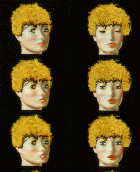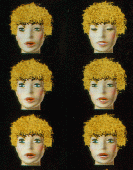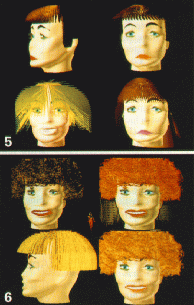Animation of a B-Spline Figure
Monique Nahas, Herve Huitric, and Michel Saintourens
Visual Computer, 1988


Abstract
In this paper we describe how the use of B-Spline surfaces allows
lissom movements of body and face. Our method is empirical, based
on a parametrical animation. It can be combined with a muscles
model for facial animation as we illustrated for the speech.

Summary
The face data they worked with composes of about 70,000 digitized
points that is built into a B-Spline surface. The direct manipulation
is not possible because of the magnitude of the database, so a
reduced set of characteristic points are selected to act as "magnets".
The movements of these characteristic points constitute the set of
parameters allowed to move the face. Their work, however, are
largely based trial-and-error to extract suitable points and
determining displacements of the characteristic points.
An interesting note in the paper is the discussion that the principal
facial expressions such as joy, disgust, surprise, sadness, anger, and
fear seem to be universal, and transcends culture. What varies
according to culture are the rules for the release of these emotions,
but not the use of muscles related to each expression.


